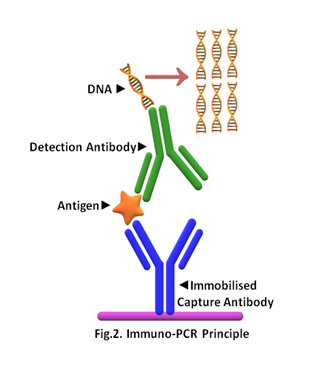Student contributors: Tanusree Paul & Subhangi Mahapatra (B.Sc. Biotechnology, SEM-VI)
In the race of development, anthropogenic activities result in contaminated soil by the accumulation of heavy metals and pose a threat to human health and the surrounding ecosystem. Certain chemical pollutants remain in the environment for a prolonged period. Several remediation techniques for heavy metals from contaminated soil-water are expensive, time-consuming, and environmentally destructive. In recent years, researchers have developed a promising and innovative technology termed as phytoremediation for remediation of sites with inorganic and organic pollutants. It is a plant-based remediation technology that uses green plants to stabilize and reduce contamination in soil, sludge, sediments, surface water, and groundwater. Phytoremediation plants must possess few specific qualities like (1) high biomass, (2) rapid growth, (3) deep and hairy root system, and (4) high bioaccumulation coefficient. Some plants can grow on soils with high levels of metals and can accumulate massive amounts of the indigenous metals in their tissues; those are termed as “hyperaccumulators”. Phytoremediation technique comprises five different strategies, those are-
- Phytoextraction, which removes metals and organics from the soil by accumulating them in the biomass of plants. Example, Indian mustard.
- Phytodegradation, which uses plants to uptake, store, and degrades organic pollutants. Example, hybrid poplar
- Rhizofiltration, which involves the removal of pollutants from aqueous sources by plant roots. Example, sunflower
- Phytostabilization reduces the bioavailability and mobility of pollutants by immobilizing of binding them to the soil matrix. Example- Various species of grass, such as red fescue
- Phytovolatilization utilizes green plants to take pollutants from the growth matrix, transform them, and release them into the atmosphere. e.g.- poplar trees.
Factors Affecting the Uptake Mechanisms
The different factors that can affect a plant’s uptake mechanism of heavy metals are
- Plant species
- Properties of medium
- The root zone
- Vegetative uptake
- Bioavailability of the metals
- Addition of chelating agents

Remediation of Inorganic Contaminants
The remediation of contamination with an inorganic contaminant must either physically remove the contaminant from the system by removing the biomass or convert it into a biologically inert form.
Remediation of organic contaminants
Organic pollutants are xenobiotics to the soil. Soil pollution with organic contaminants is one of the most obstinate environmental problems today. Among the various organic contaminants, persistent organic pollutants (POPs) are the most common due to their long-term persistence, bioaccumulation, and high toxicity. Polychlorinated biphenyls (PCBs), polycyclic aromatic hydrocarbons (PAHs), total petroleum hydrocarbons (TPHs), and pesticides are the most common groups of POPs existing in contaminated soils. They cause significant negative effects on the environment because of their high toxicity, mutagenicity, carcinogenicity. One patented process uses a carrot to absorb dichlorodiphenyltrichloroethane. The carrots are then harvested, solar-dried, and incinerated to abolish the contaminant. Another method for direct extraction of an organic contaminant from the soil by using plants is root accumulation, xylem translocation, and subsequent volatilization from leaf surfaces.
Role of biotechnology in phytoremediation
Phytoremediation is still at an early stage of development. Plant biotechnological approaches have played an important role in phytoremediation. An ideal phytoremediator would be highly tolerant of the pollutants, capable of metal uptake and accumulation, also able to either concentrate or degrade the pollutants in the biomass at high levels. Plants, that can translocate metals from roots to shoots at high rates are more effective hyperaccumulators. Since most of the metal hyperaccumulators have low biomass and are slow-growing, biotechnology allows transferring hyperaccumulator phenotypes into high biomass, fast-growing plants that can be highly effective in phytoextraction. Excess production of hormones in hyperaccumulators can alter their biomass production. Although the use of biotechnology in the development of the transgenic plant with the improved potentiality for efficient sustainable bioremediation is highly promising. Several researchers devised transgenic plants to reduce some of the constraints of metal phytoremediation, few transgenic plants are developed to tolerate a high level of accumulated cadmium and lead. Transgenic plants are produced by genetic engineering techniques whose DNA is modified. In the laboratory, genetically engineered plants are produced by altering the genetic-character, usually by adding one or more genes of a plant’s genome. Enhanced gibberellin’s production in the transgenic plant was shown to promote biomass production and growth. Genetic engineering is a powerful method that improves the capabilities of natural phytoremediation, or it introduces new capabilities into plants. For example, genes encoding a nitroreductase from a bacterium were inserted into tobacco resistance to the toxic effects of TNT. Also with the help of biotechnology, it is possible to improve the gene expression for maximum resistance. Certain plants show increased resistance under the presence of certain microbes.
Risk and Benefits 0f Phytoremediation
Benefits
Plant roots stabilize the soil and avoid the movement of contaminants by runoff and windy particles. Contaminants do not spread much via air and water. The method uses plants and natural resources and thus the cost is lower than other processes both in situ and ex situ. This is usually aesthetically pleasing and favored by the public compared to other structures and at the same time, it helps to clean the contaminated site. This technique makes it suitable for restoring agricultural soils affected by scattered industrial emissions. Also, it is an environment friendly method and multiple contaminants can be removed with the same plant. It is also possible to recover and reuse the valuable metals received from the process of phytomining. The plants can be easily monitored. Overall, this method is less harmful because it utilizes naturally occurring organisms and preserves the environment in a more natural state.
Risks
Phytoremediation cannot be used to tackle deep contamination; grasses can clean up to three feet, shrubs up to ten feet, and deep-rooted trees up to 20 feet. The cycle is usually slow and can take between three and five years to meet the planned clean-up goals. The toxicity of the contaminated land and the general condition of the soil may have some adverse effect on the plant. The choice of plants and their compositions is very much at the experimental stage and additional research is required. The method is highly dependent on local climatology and must be based on local criteria. In winter, the phytoremediation system can lose its effectiveness when plant growth slows down or stops. Also, large-scale operations can involve heavy agricultural machinery, which is usually located far from our polluted urban areas. Since wildlife and humans consume plants, measures must be taken to prevent the introduction of pollutants into the food chain. Finally, waste biomass must be disposed of correctly, often at high costs.

Prospects
Plant biotechnological techniques have indeed performed an important role in the production of transgenic plants with enhanced potential for effective, clean, cheap and sustainable bioremediation technologies, still, many challenges remain such as,
- Regulatory constraints may be re-examined regularly to make the use of transgenic for phytoremediation less complicated.
- Insufficient information on the complex relationships that occur between the rhizosphere and the processes that are dependent on the ability of plants to absorb and extract metals from the contaminated setting.
- Phytoremediation techniques need to be designed with multiple genes stacked to satisfy the requirements of different sites.
- The use of transgenic plants in phytoremediation is still in field trials. Biosafety issues need to be adequately addressed and methods need to be established to avoid gene transfer to wild species.
Future of Phytoremediation
The effectiveness of phytoremediation also depends to a large degree on the plant’s ability to withstand the removal of contaminants. It is therefore of the highest concern to assess the maximum possible amount of xenobiotic compounds that can be produced and detoxified without damage, essential stress, and degradation of plant metabolism or redox processes in the organisms under consideration. Phytoremediation researches in the future may involve the elucidation of genetic, molecular, and cellular mechanisms to highlight how phytoremediation can be improved. PCR amplification and DNA fingerprint or microarray gene chip may provide a further overview of the process and may contribute to the selection of a particular plant variety to be applied to a specific pollutant within a built wetland or soil. The most important challenges and the improvement of phytotechnology efficiency rely on the dissemination of data, risk evaluation, public knowledge and acceptance of this green technology, as well as the advancement of coordination among scientists, industry, stakeholders, end-users, non-governmental organizations, and government agencies. This needs to be tackled to make sure that phytoremediation systems are effectively developed.












